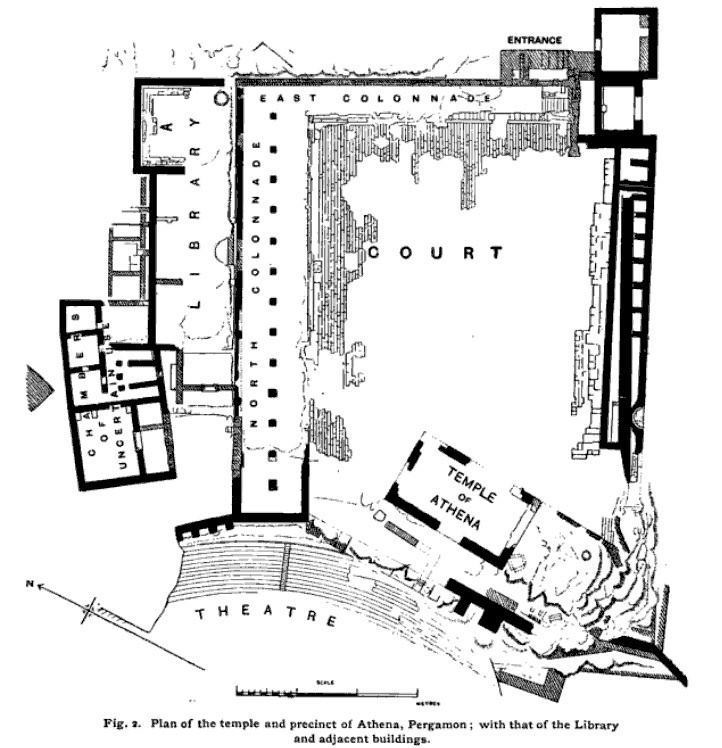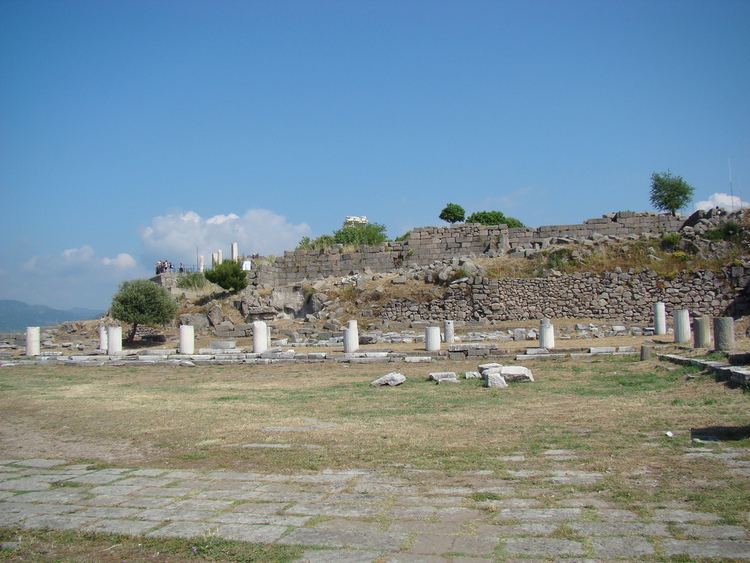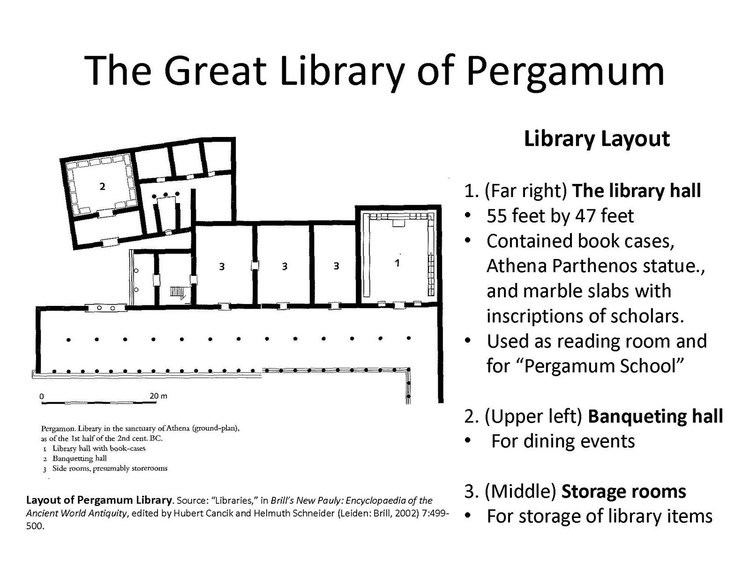Established 3rd century BC | Type National library Location Pergamon | |
 | ||
The Library of Pergamum in Pergamum, Turkey, was one of the most important libraries in the ancient world.
Contents
- Library of Pergamum
- Best Tourist Attractions Places To Travel In Turkey Library of Pergamum Destination Spot
- The City of Pergamum
- The Library of Pergamum
- Decline
- References
Library of Pergamum
Best Tourist Attractions Places To Travel In Turkey | Library of Pergamum Destination Spot
The City of Pergamum

Founded sometime prior to the Hellenistic Age, Pergamum or Pergamon was an important ancient Greek city, located in Anatolia. It is now the site of the modern Turkish town, Bergama. Ruled by the Attalid dynasty, the city rose to prominence as an administrative center under King Eumenes II of Pergamum, who formed an alliance with the Roman Republic, severing ties with the Macedonians.

Under the rule of Eumenes II, Pergamum was a wealthy, developing city with a population of over 200,000 people. Culturally it was rivaled only by the cities of Alexandria and Antioch. Many important works of sculpture and architecture were produced at this time, including the Great Altar of Pergamon. Upon the death of Attalus III, son of Eumenes II, in 133 BC, Pergamum was bequeathed to the Roman Republic. After the fall of Constantinople, Pergamum became part of the Ottoman Empire.

Pergamum was also an important city in the New Testament and was explicitly mentioned by St. John as one of the Seven Churches of Revelation in the Book of Revelation. The ruins of Pergamum and its library are now major archaeological sites in Turkey.
The Library of Pergamum

Pergamum was home to a library said to house approximately 200,000 volumes, according to the writings of Plutarch. Built by Eumenes II and situated at the northern end of the Acropolis, it became one of the most important libraries in the ancient world. The cultured Pergamene rulers built up the library to be second only to the Great Library at Alexandria. Flavia Melitene, who was a distinguished citizen of Pergamum and wife of a town Councillor was instrumental in supplying the library. She also presented a statue of Hadrian to the library as a gift. It is known that a certain Artemon was employed in the library during the second century B.C. though his personification is obscure. No index or catalog of the holdings at Pergamum exists today, making it impossible to know the true size or scope of this collection.
Historical accounts claim that the library possessed a large main reading room, lined with many shelves. An empty space was left between the outer walls and the shelves to allow for air circulation. This was intended to prevent the library from becoming overly humid in the warm climate of Anatolia and can be seen as an early attempt at library preservation. A statue of Athena, the goddess of wisdom, stood in the main reading room.
Manuscripts were written on parchment, rolled, and then stored on the shelves. The word "parchment" is derived from Pergamum (via the Latin pergamenum and the French parchemin). Pergamum was a thriving center of parchment production during the Hellenistic period. The city so dominated the trade that a legend later arose indicating that parchment had been invented in Pergamon to replace the use of papyrus, which had become monopolized by the rival city of Alexandria. This however is a myth; parchment had been in use in Anatolia and elsewhere long before the rise of Pergamon. Parchment reduced the Roman Empire’s dependency on Egyptian papyrus and allowed for the increased dissemination of knowledge throughout Europe and Asia.
Decline
The Kingdom of Pergamon fell to the Romans in 133 BC and the library grew neglected. In 43 BC Mark Antony seized the collection of 200,000 rolls and presented them as a gift to his new wife Cleopatra, presumably in an effort to restock the Library of Alexandria, which had been destroyed by Ptolemaic raiders in 47 BC. Emperor Augustus returned some of the rolls to Pergamum after the death of Antony, and the library remained extant well into the Christian era, though it was not mentioned much by later historians, indicating its collection was no longer significant.
The ruins of the library sit on a hilltop near the Sactuary of Artemis and other buildings of the Pergamon Acropolis.
